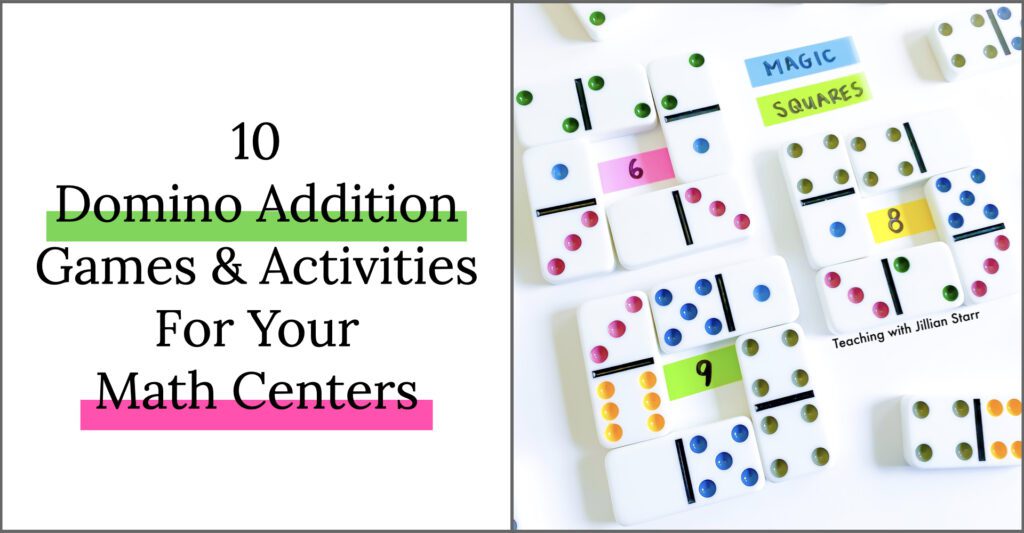
There are many ways to play with Dominoes. People have played variations of the game for centuries. But did you know that Dominoes are an excellent tool for teaching addition?
Years ago, I discovered that a bit of creativity transforms these classic game tiles into a flexible math manipulative. Ever since I’ve incorporated them into various addition math centers. Dominoes are, inherently, single-sided game pieces that visualize two different numbers. A line separates the numbers, which typically go from 1 to 6. Of course, my love of math manipulatives has encouraged me to collect numerous variations. Some sets even go from 1 to 12!
As your virtual teammate, I want to share TEN of my favorite domino addition activities. Each is a low-to-no prep activity with ample opportunities to differentiate. I use them for strengthening math vocabulary, computation practice, and addition concepts that extend beyond computation skills.
So, wipe off that dusty box of dominoes and get ready to amp up your addition math centers!
Domino Addends
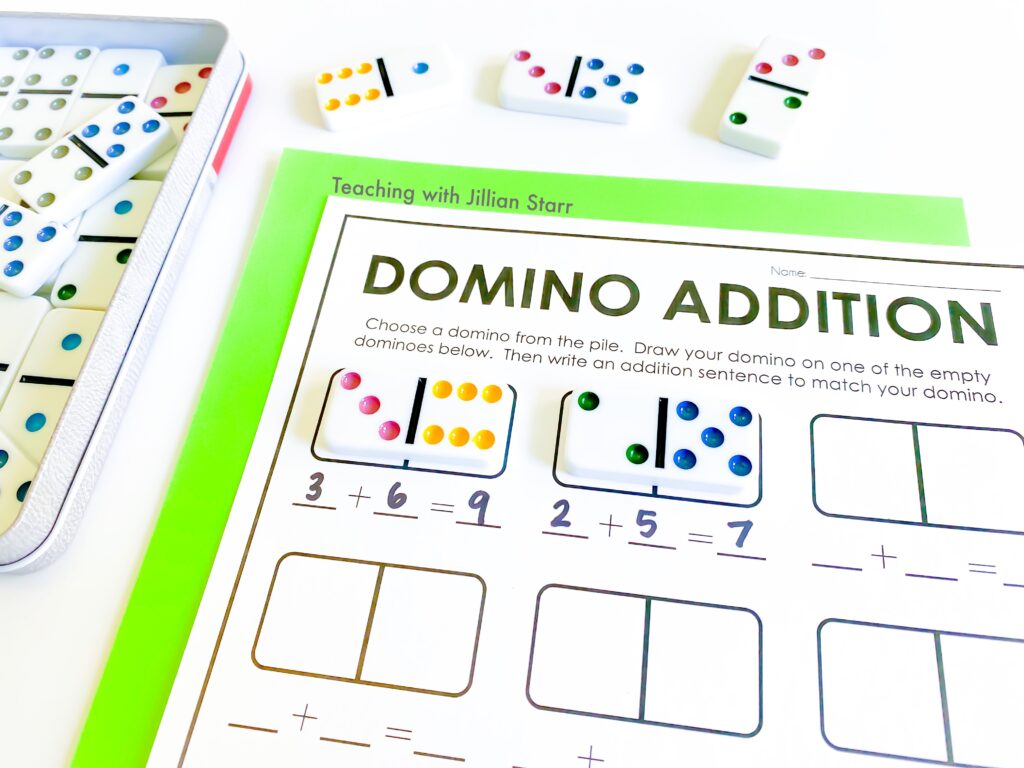
Domino Addends is one of my favorite independent activities for addition stations.
The instructions are simple. The activity continues forever. And, prep is near-instant.
So how do you play this minimalist activity? Easy. Start with some addition recording sheets and a box of dominoes.
- Lay dominoes out on a table, face down.
- Flip a domino of your choice.
- Each side of the domino becomes an added.
- Record the addends and find the sum!
There are no early finishers with Domino Addends. However, you can always level up students with dominoes that include higher numbers.
Domino Addition to Ten
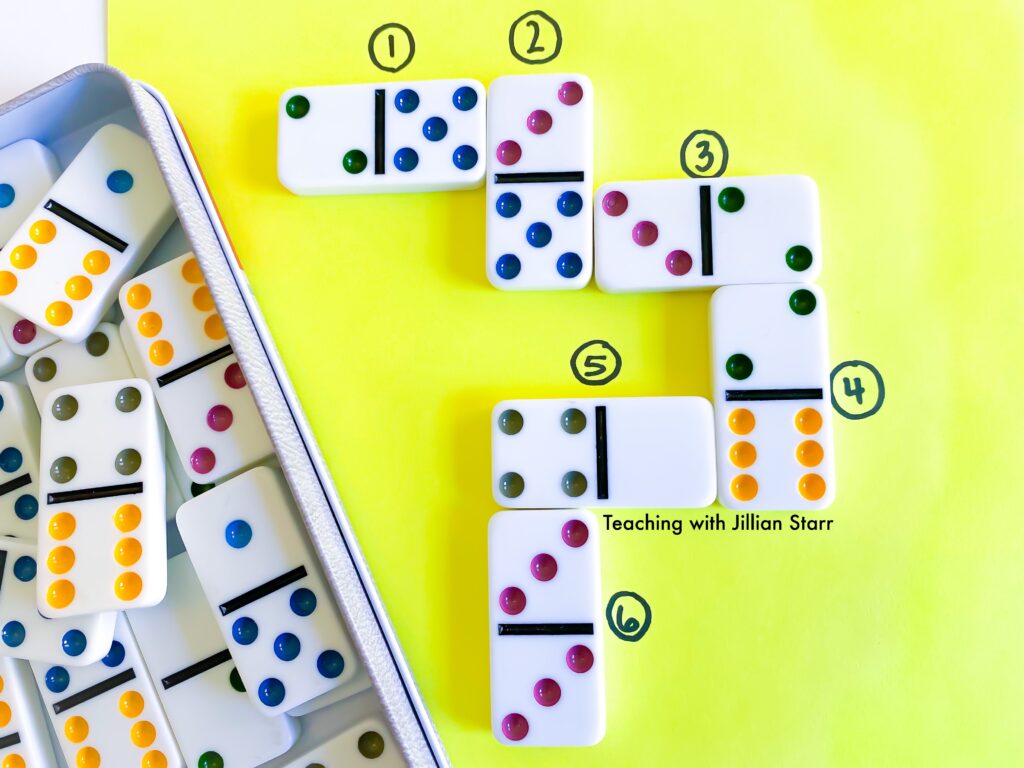
This activity is not only a classroom favorite. It is also a household favorite. Seriously, Desmond and I play this all the time!
It is a fantastic game for partners. Even better, the collaborative aspect of Domino Addition to Ten helps students support each other in their conceptual and computational growth.
Here’s how you play:
- Divide the dominoes equally between partners.
- Take turns placing one down at a time.
- Almost like connect four, the game’s goal is to create a row of dominoes that make ten. You want to place the tile down that makes ten. That becomes your row.
- Keep going until you use all tiles. Whoever has the most rows wins!
In the photo above, the numbers correspond to the order in which the dominoes were played. Each new domino played needs to create a row of ten in order to be a valid play.
Domino Addition Fact Families
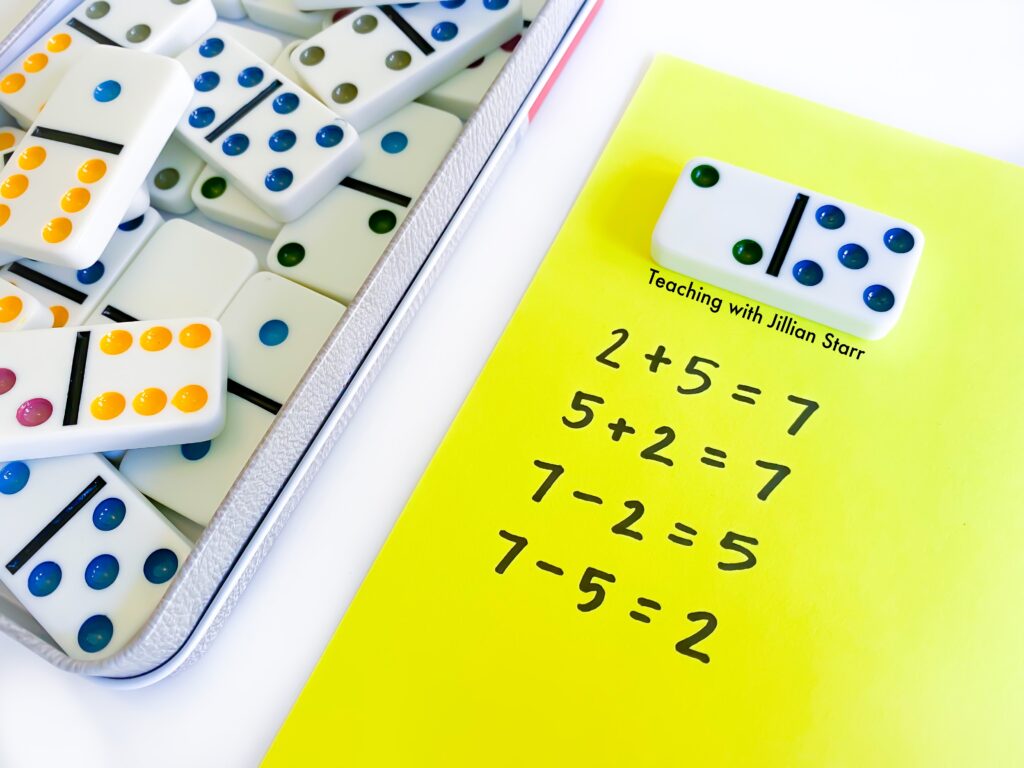
Domino Addition Fact Families makes fact family practice a little more exciting! Plus, it is a fantastic way to practice multiple skills with one goal. Students develop their ability to recognize pictorial representations of numbers while practicing computation.
Prep is quick and easy. Give students a template or model of an addition and subtraction fact family. Then, put out a box or pile of dominoes.
The student picks a domino from the pile. They draw the domino they chose into one of the empty domino pictures. The domino gives two parts of a fact family (the addends). The student then adds those two numbers together to create a whole fact family. Underneath the picture, they record the numbers as a number sentence. For example, if a domino had the numbers 2 and 5, I would record the fact family corresponding to “2 + 5 = 7.”
Domino Add and Compare
Are you looking for a 2-player game? Needing something a bit more competitive? Look no further.
Domino Add and Compare is a 2-Player addition game. In many ways, it is similar to the game “War.”
Each player flips over one of their dominoes. Whoever has the greater sum gets to keep both tiles. If they tie, they flip again, and the greater domino gets all four. In the end, the player with the most tiles wins.
Domino Sum Sorts
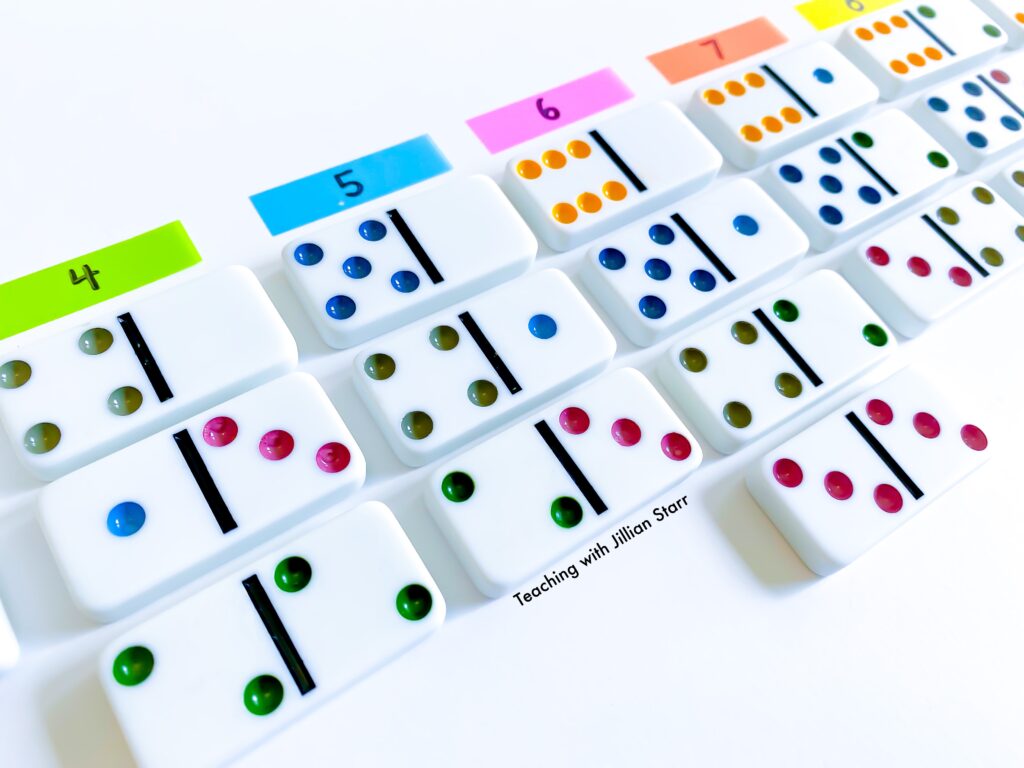
Domino Sum Sorts is another no-prep activity that engages students quickly. I have used it for various addition centers, including as independent work, for small group practice, and as a collaborative partner activity.
The goal of Domino Sum Sorts is to sort a set of dominoes by sum.
The student(s) gets a pile or box of dominoes. The student(s) must add together both domino numbers to find the sum. Then, they place the domino into a group with dominos with the same sum.
Domino Sum Sorts is great for addition review without a recording sheet. However, you can modify this activity to include a written component. Two ideas that require ZERO extra prep:
- Have students sort and then record the different groups in a math journal.
- Have students record in their math journals while sorting.
Domino Odd or Even Sort
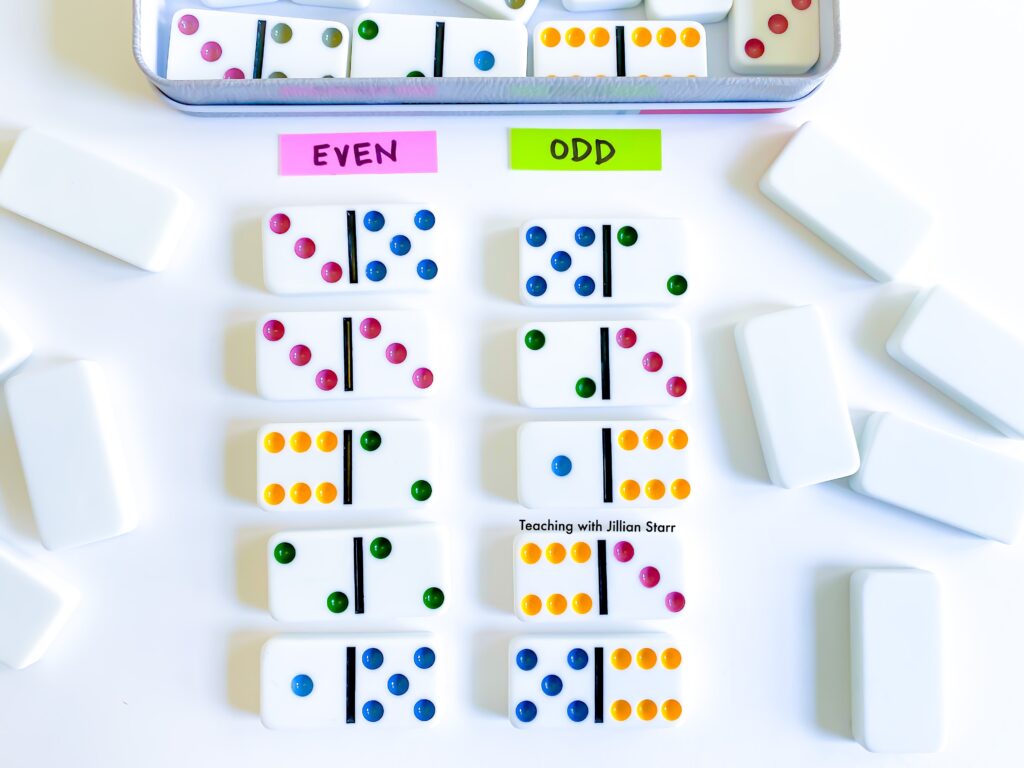
Love the simplicity of Domino Sum Sort? Here’s another idea that takes it one step further!
Dominoes are perfect for practicing even and odd numbers, and number recognition.
The goal of Domino Odd or Even Sort is to find the sums of a pile of dominoes. Then, sort the dominoes by even sums and odd sums. Just like Domino Sum Sorts, students can record the addition number sentences in a math journal or recording sheet.
Domino Addition Graphing
I love activities that reinforce a range of concepts, as you may have noticed. Domino Addition Graphing does precisely that. I reuse this activity in centers for both addition and graphing.
So, how does it work? You can think of Domino Addition Graphing as an add-on to Domino Sum Sort.
After sorting the dominoes by sum, students put their data into a bar graph. Students will record each tile’s sum. The sum numbers are on the x-axis (horizontal/bottom). The number correlating to the number of tiles with each sum is on the y-axis (vertical/side).
Using graph paper or a preprinted graphing sheet, students record each tile’s sum. One tile’s sum equals one graph square (one-to-one correspondence). For example, if three tiles have the sum of 5, there could be three squares vertically stacked over 5 on the x-axis.
Domino Magic Squares
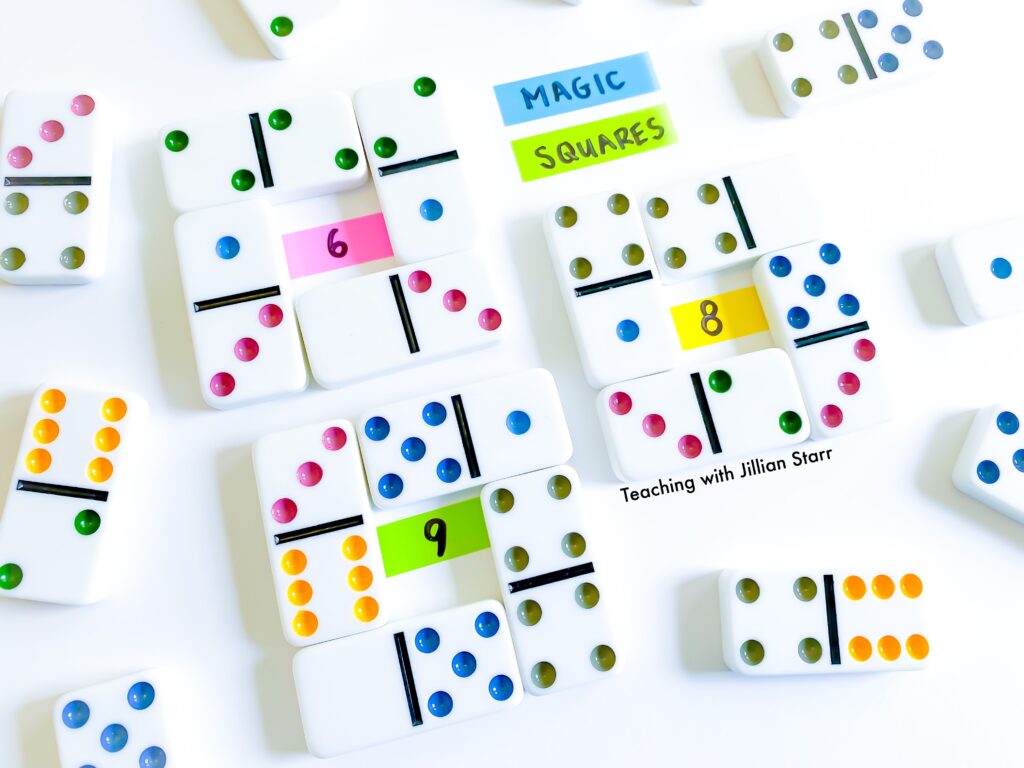
Domino Magic Squares is a great way to challenge students’ thinking.
In Domino Magic Squares, students build toward a specific number. Students place four tiles around the number on a worksheet or reusable cards. They are placed in a square. Each row of numbers must equal the number in the center (each row has 3 numbers, although there may be blanks).
For example, the magic number is 9. The student places four tiles around the 9. Each row of numbers equals 9.
I love Domino Magic Squares because it challenges kids to be intentional about the dominoes that they are choosing. This intentionality is a great way to provide more advanced work for students before bumping them up to higher numbers.
Double-Digit Domino Addition
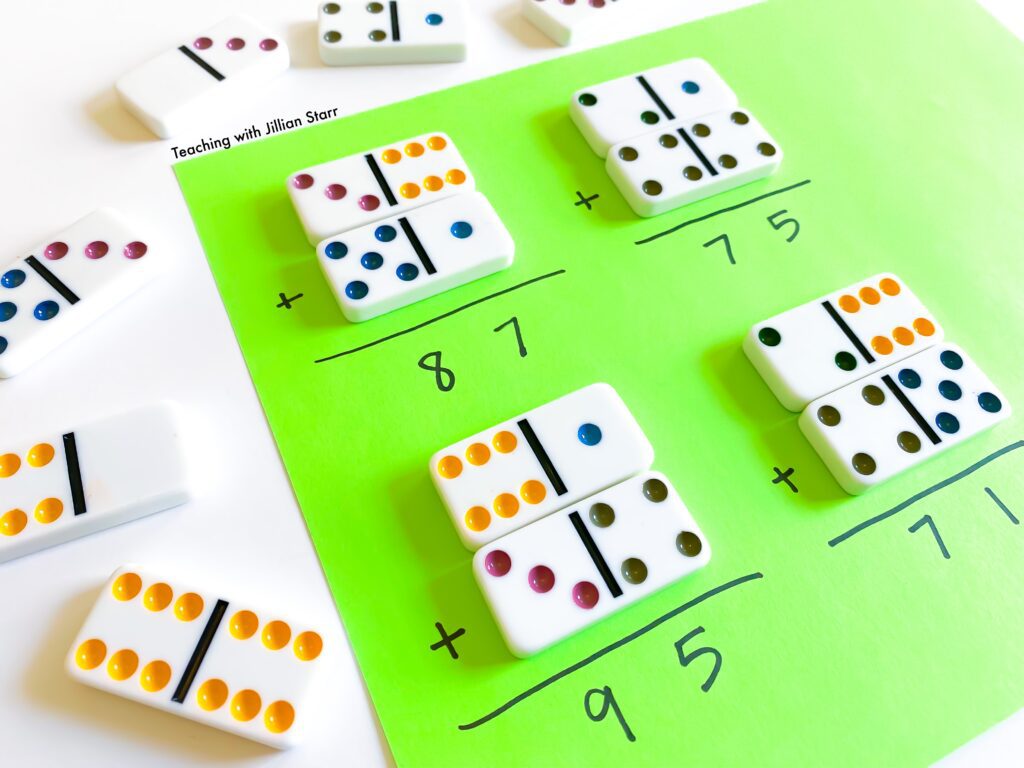
Ready for double digits?
Many of these domino activities gear toward single-digit addition fact families. But, kids can also use dominoes as they advance into the double digits.
For Double-Digit Domino Addition, students place each domino horizontally. In this position, they make two-digit numbers. For example, if the numbers on the domino are 3 (left) and 6 (right), then that domino equals 36.
Students stack two dominoes on top of each other. Then, they add those two dominoes together. Don’t forget to record the addends and sums on a recording sheet or in a math journal!
I love this activity. Double-Digit Domino Addition visually correlates with the standard algorithm for addition. It also clearly defines the tens place and ones place.
Domino Addition Extension Challenge
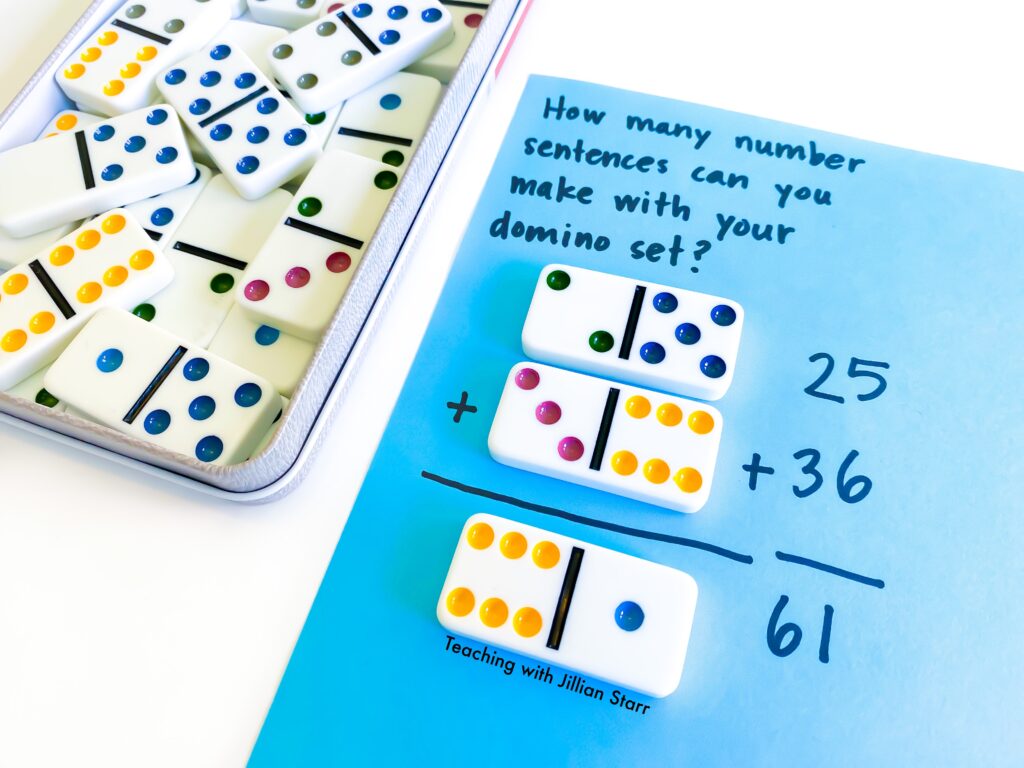
You can differentiate many of the activities I’ve shared today. However, sometimes students need an extra challenge. Personally, I like a challenge that can go on forever. That’s where this Domino Addition Extention Challenge comes in.
This adds to the Double-Digit Domino Addition above.
But, I’m not just suggesting that students find some larger numbers and write them down. What makes this intellectually challenging? Instead, students build the number sentences with dominoes!
Stack two dominoes on top of each other. Then, find a domino that matches the sum. For example, you stack a 25 domino and a 36 domino. After, find a domino that matches the sum: 61.
How many domino addition sentences can you create with your set?
There are so many creative ways to use dominoes in your math workshop. Today I’ve focused on early addition activities, but the list goes on and on. I hope that these domino addition activities inspire and support your centers. Did you try some out? I’d love to hear about your experience.
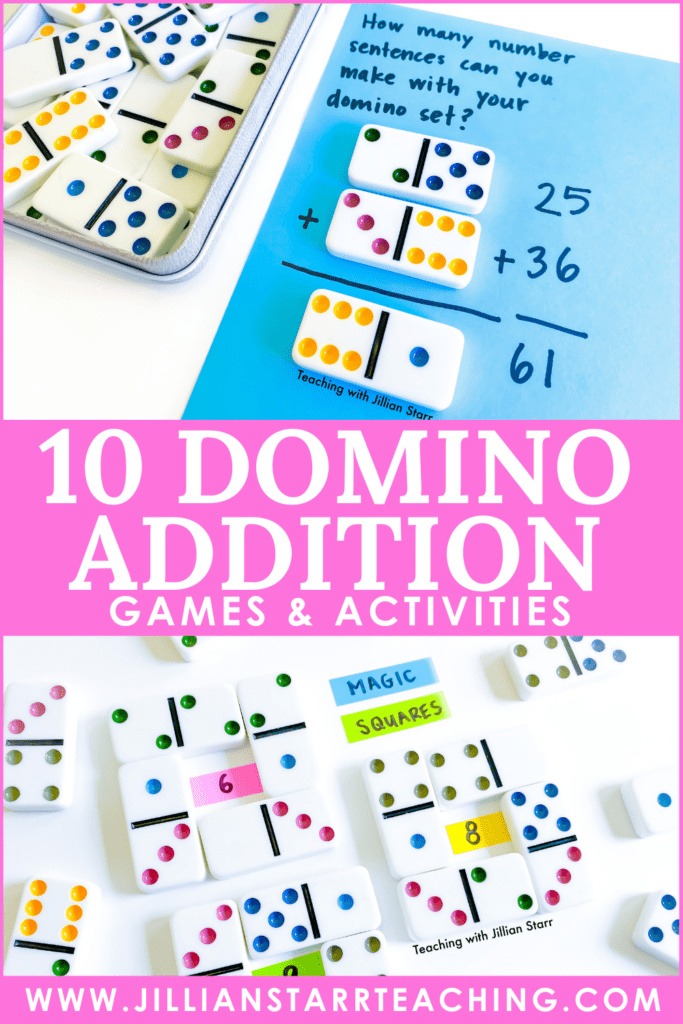

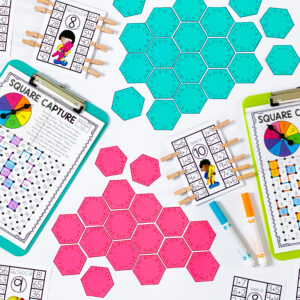
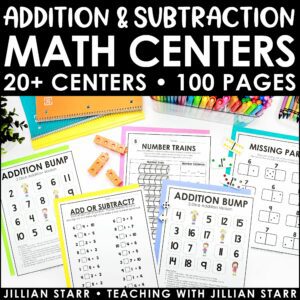
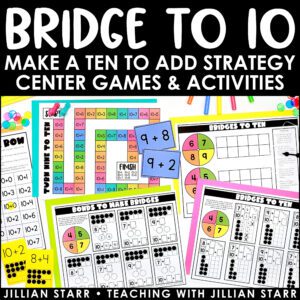
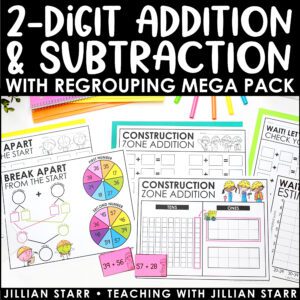
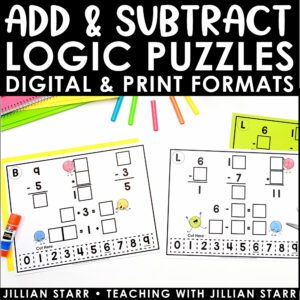
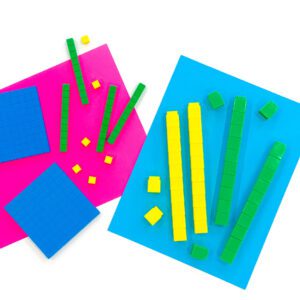
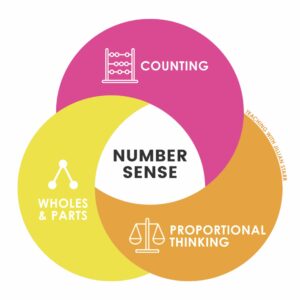

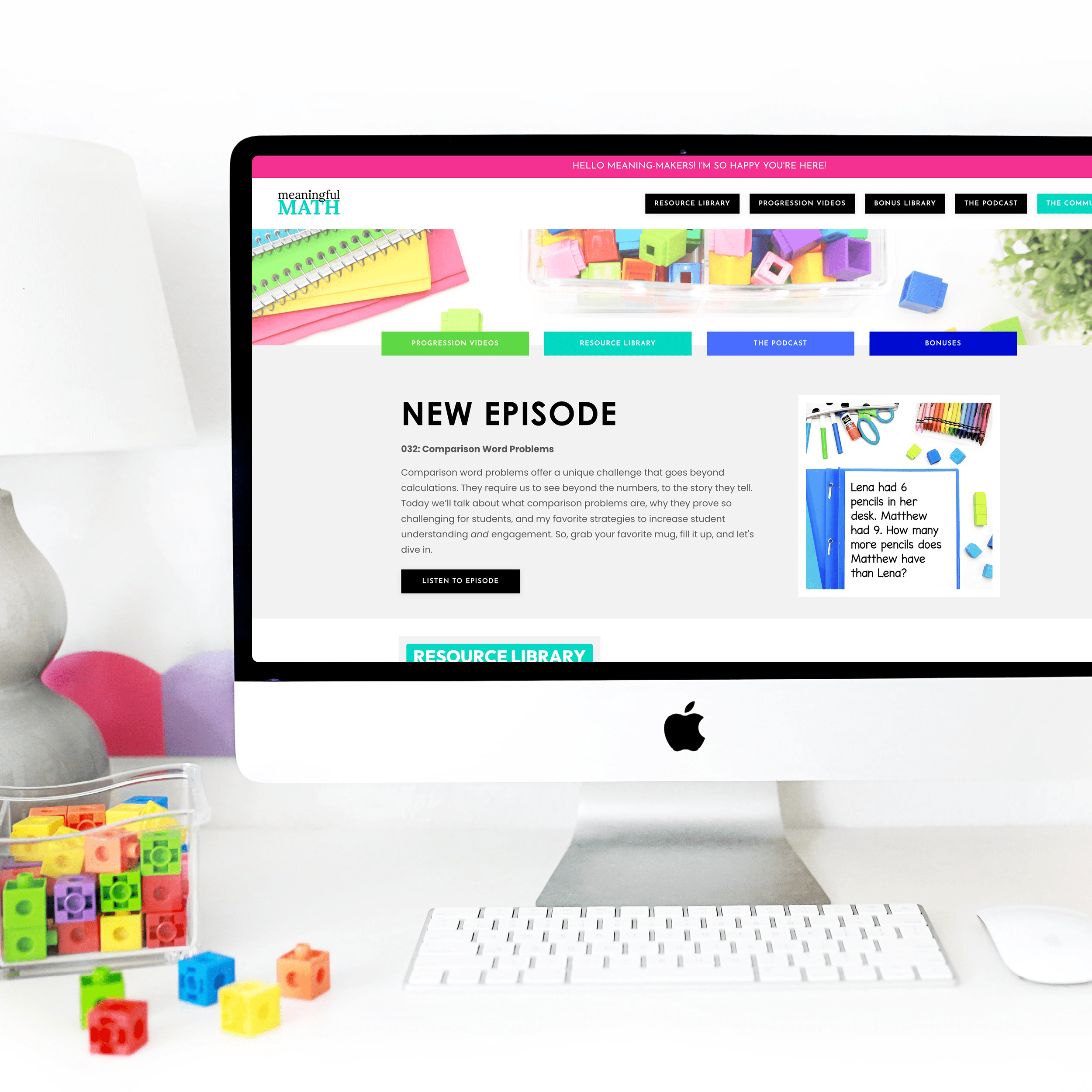


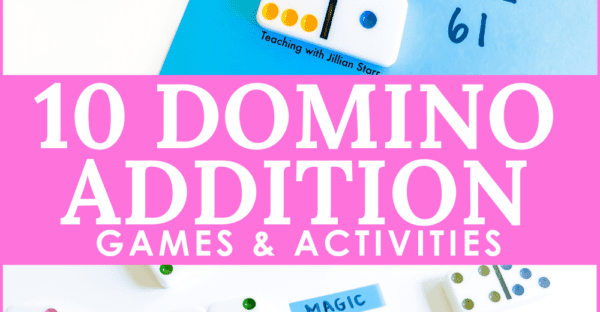
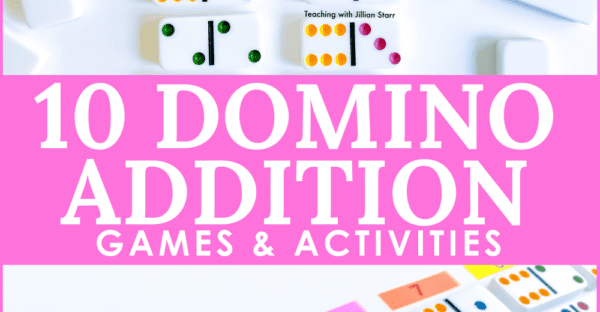
Where can I find printables for these math activities ?
Hi Jillian,
Love your Blog. I can’t seem to locate the download or purchase spot for the domino addition for games and centers. I’ve read the info, clicked on what I thought might be where I need to go. Saw the filed under spot, but still can’t find the domino papers.
Thanks
Sharon Young
Hi Jennifer! The single-digit domino addends activity is included in my addition centers pack (I’ll link it below). The others I just use paper and pencil, or math journals for students to record their thinking.
https://www.teacherspayteachers.com/Product/Addition-and-Subtraction-Math-Centers-Activities-and-Games-1128002
Hi Sharon! I am so glad to know you enjoy what I share here in this little corner of the internet. The single-digit domino addends activity is included in my addition centers pack (I’ll link it below). For the others, I just use paper and pencil, or math journals for students to record their thinking.
https://www.teacherspayteachers.com/Product/Addition-and-Subtraction-Math-Centers-Activities-and-Games-1128002
How do I pin this blog to refer to it later? I love the info.
Hi Roberta!
I just added a pin to the post so you can pin it and save it for later. Thank you for thinking the content is worthy of pinning and coming back to!
Warmly,
Jillian
This is a wonderful collection of addition games! I love it!
Sounds like my students will love these activities. Thanks!